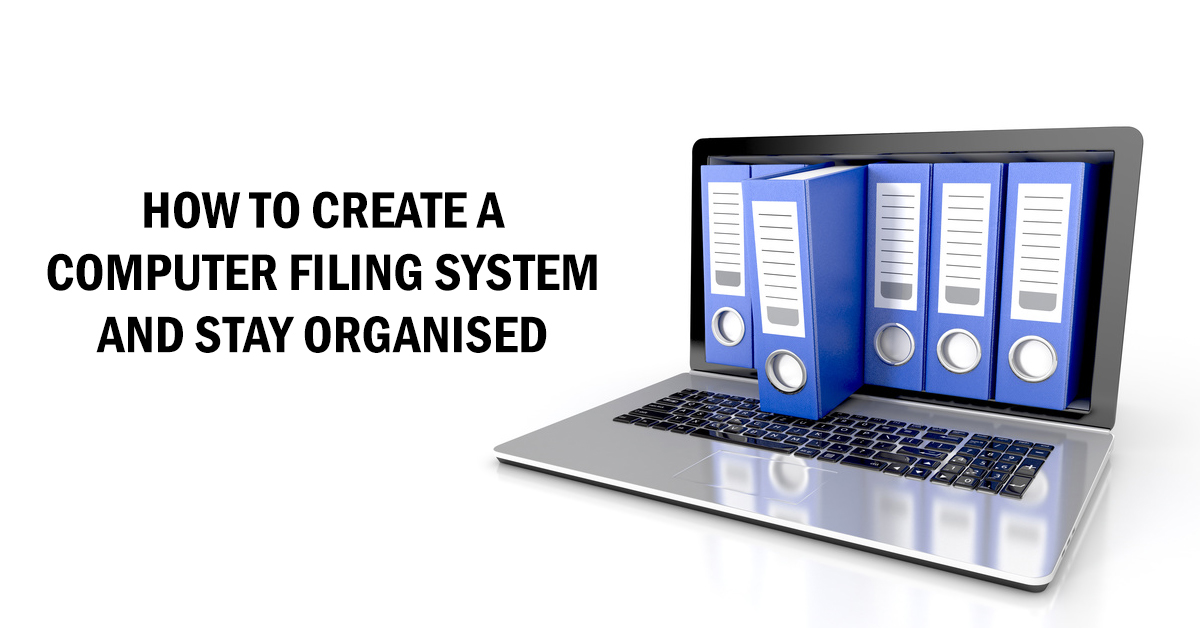When you think of being organised, one of the last things that cross your mind is getting your computer files organised. Every time you need a file or document and have to do unnecessary clicks to access a practically hidden folder, you drastically reduce your productivity. When you take a step back and analyse the situation, you’ll see how much work you could’ve accomplished in that time.
The idea of organising your files and documents goes back to the good old days of paper documents and filing cabinets. The advantage of following this system was that you could quickly locate documents when you needed them. Since we mostly use digital documents today, using a computer filing system helps you set up a basic organisational structure that helps you search for and access your files quickly. . Some people may also purchase computer accessories should they choose to store their data on an external hard drive such as a USB or a hard disk.
Let’s take a look at some good practices for setting up a neat computer filing system. There are three main goals you need to achieve with your computer filing system.
Easy to file: You don’t want to complicate your filing system and turn it into a hierarchical maze. Keep things simple so that saving every file is done fast and easy.
Easy to find: Make it easy for your system and yourself to locate files quickly whether by going through folders manually or using search. This will also help you use your laptop’s storage and memory more efficiently.
Reusable: Wherever possible, try to use re-usable templates and naming systems, both of which support the first two goals.
With your goals out of the way, here are some simple rules to follow.
Never save to your desktop
Apart from a few standard programmes and Recycle Bin, your Desktop is supposed to be clean and free to display your high-resolution wallpaper. You can save a file or two on occasion for temporary storage if you need to refer to it regularly. By leaving to many files and documents on your Desktop, you will slow down your system.
Limit the number of folders
Think minimal when creating your folders. You might think you’re extremely organised with multiple folders, but it is counterproductive as you will be going through several clicks to get to the file you need. As a rule of thumb, only create a new folder if you find yourself coming back to save similar files in one place.
Stick to one location
Don’t mistake this to be placing all your files and documents in one folder, or worse, your Desktop. For laptops running on Windows, think of My Documents as your starting point. However, don’t begin stuffing you’re my Documents folder with every single file you have. Instead, think of it as a home for all your folders that contain your data.
Organise by category and date
One easy way to organise your files and folders is by sorting them into specific categories. For example, you can have two broad categories – Personal and Work. Under those two folders, you further categorise your documents into Family, Travel, Assignments, Finances, etc. Just remember not to have too many folders and sub-folders so you can achieve the first two goals.
You can also try organising by date, but this can’t be used on its own. A file or folder named “12-11-18” will give you no identification of its contents, and you will be wasting time going through it. Adding the date after the title or description makes more sense for time-sensitive files and files that will be updated regularly (like a resume).
Follow a standard naming system
Another thing you need to consider when organising your computer filing system is standardisation. Keep names brief, but not so short that you are confused about the content. You may be using your files and folders for personal use, but in case you need to share them with someone else on a professional basis, you don’t want them to wonder what the file or folder contains.
A proper computer filing system should include all parts of handling documents including storage, retrieval, backups, etc. while your search function can help you to an extent, nothing beats the ease of finding files on your own. Implement these tips today on a brand new laptop that you can purchase from Dell Exclusive.




